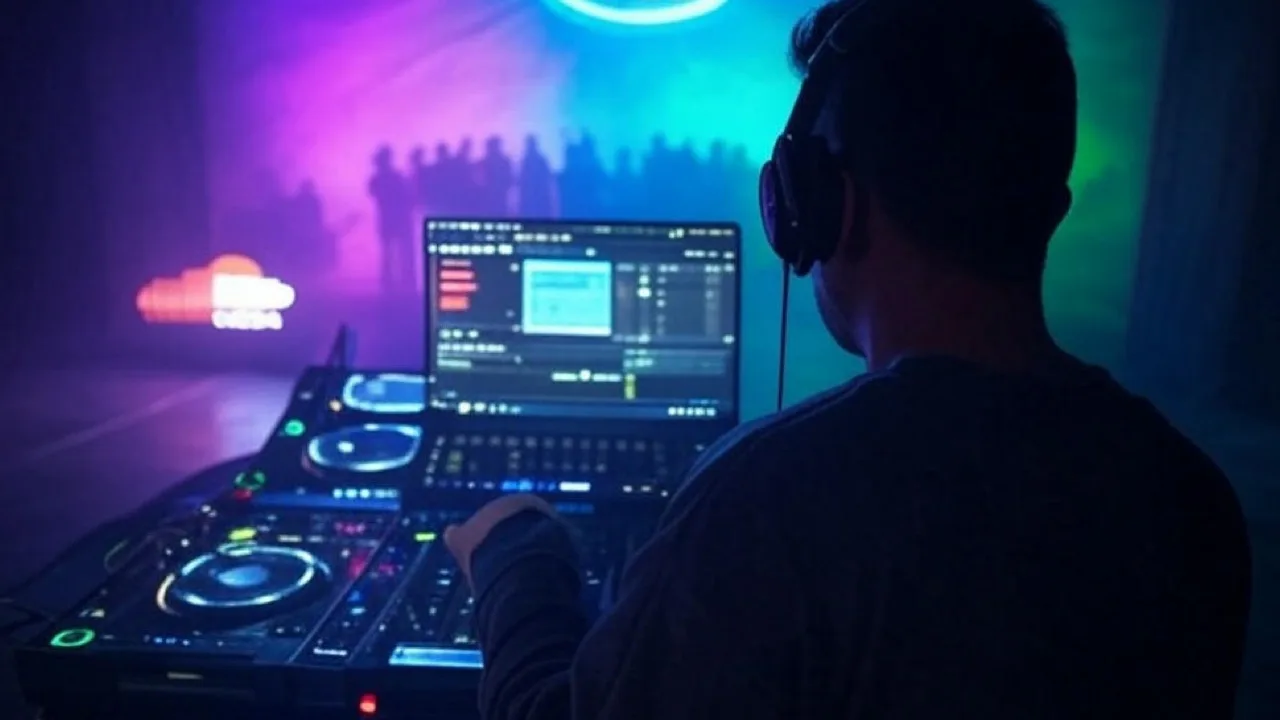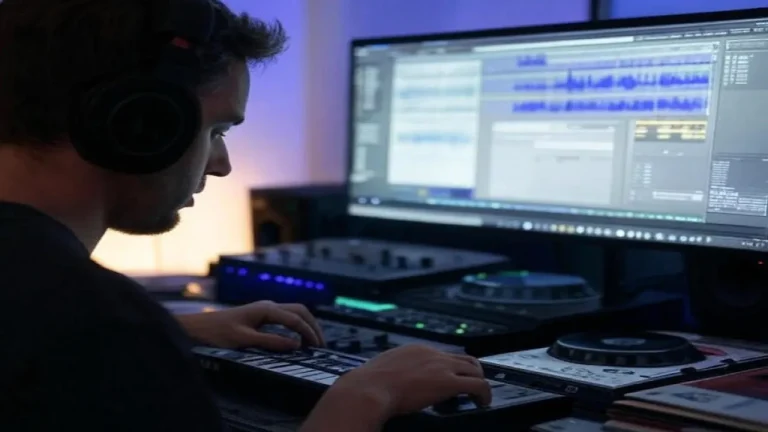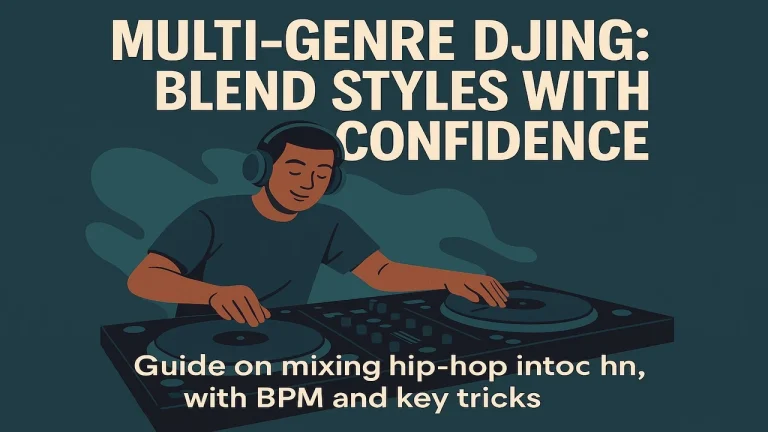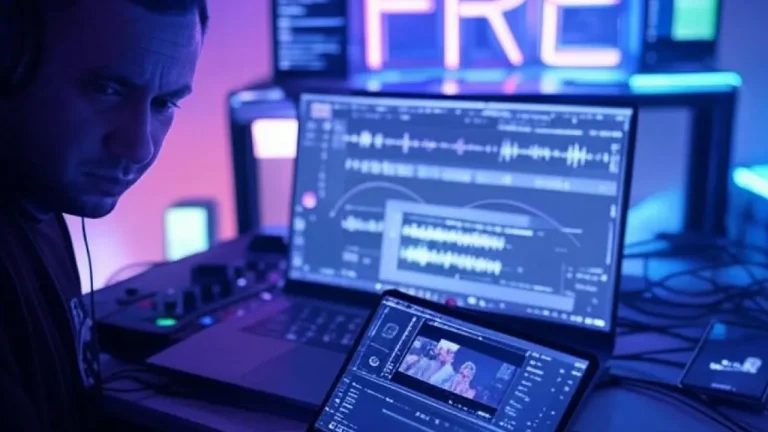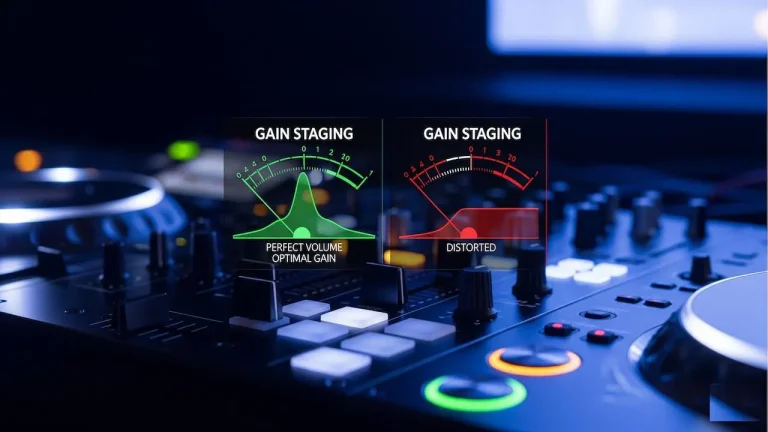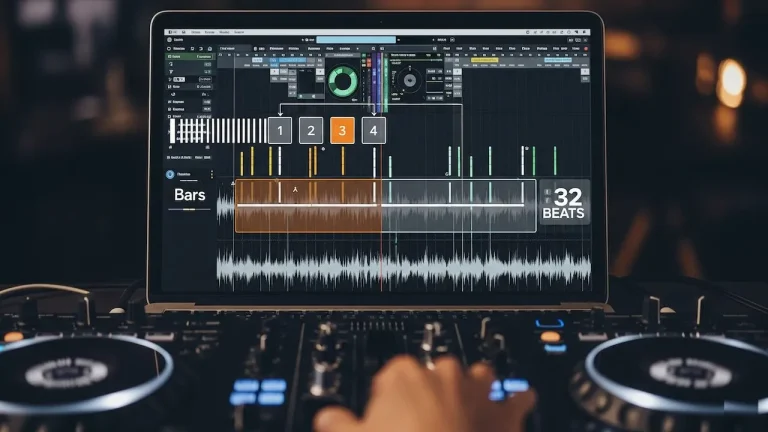Live DJ looping repeats a selected track section instantly during performance, allowing DJs to extend breakdowns, create live mashups, and control crowd energy dynamically. This real-time technique transforms any track into an extended experience by grabbing vocals, drops, or instrumental sections and playing them repeatedly with precise timing.
For DJs performing live sets, looping becomes a powerful tool that adds spontaneity to structured performances. Rather than relying solely on pre-planned transitions, you can respond to crowd reactions by extending exciting moments or building tension through strategic repetition.
What Makes Live DJ Looping Different from Studio Looping
Live DJ looping happens in real-time during performance without pre-planning or preparation. While studio loops are carefully crafted and edited beforehand, live loops are created spontaneously based on crowd response and musical intuition.
The main differences include timing flexibility, crowd interaction opportunities, and the ability to adapt to unexpected moments. Studio loops follow rigid structures, but live loops can be adjusted, shortened, or extended based on the energy in the room.
Modern DJ software such as Traktor Pro 3, Serato DJ, and VirtualDJ provide intuitive looping controls that make real-time looping accessible to DJs at any skill level.
Essential Looping Techniques for Live Performance
Auto-Loop Button Mastery
The auto-loop button creates instant loops at predetermined lengths like 1, 2, 4, or 8 beats. Most DJ controllers feature dedicated auto-loop buttons that engage loops immediately when pressed during track playback.
To use auto-loops effectively, practice hitting the button during musical phrases that work well as repetitive elements such as drum breaks, vocal hooks, or melodic riffs. Short loops create rapid-fire repetitions that energize crowds, while longer loops build suspense and anticipation.
Manual Loop Creation
Manual loops give you precise control over loop start and end points using loop-in and loop-out buttons. This technique requires more practice but offers complete creative freedom over which sections to repeat.
Start by identifying sections with clear musical phrases and practice setting loop points during less intense moments of your set. Build confidence with manual loops before attempting them during peak dance floor moments.
Loop Length Experimentation
Different loop lengths create distinct effects and crowd responses. Quarter-beat loops create stutter effects, while 8-beat loops maintain musical phrases intact.
| Loop Length | Best Use Case | Crowd Effect |
|---|---|---|
| 1/4 Beat | Stutter effects, build-ups | Creates tension and anticipation |
| 1-2 Beats | Drum patterns, quick cuts | Maintains energy, adds rhythm focus |
| 4-8 Beats | Vocal hooks, melodic phrases | Allows singing along, familiar repetition |
| 16+ Beats | Extended breakdowns, crowd participation | Builds massive anticipation for drops |
Software and Hardware for Live DJ Looping
Top DJ Software for Looping
Traktor Pro 3 leads the looping game with its Remix Decks and sample triggers. The ability to capture loops and trigger them from sample decks is a standout feature that sets Traktor apart from competitors.
Serato DJ Pro provides reliable loop rolls and saved loops, while VirtualDJ 2025 uses advanced technology to mix track components like vocals, instruments, and kicks in real-time. Each platform offers unique advantages for different performance styles.
Hardware Controllers with Loop Features
Modern DJ controllers include dedicated loop sections with tactile feedback for precise timing. Pioneer CDJ series, Native Instruments Kontrol series, and the Hercules DJControl Mix Ultra offer wireless looping capabilities for mobile performances.
Physical loop controls provide better timing accuracy than software-only approaches, especially during high-energy performances where visual focus remains on the crowd rather than the screen.
| Controller Feature | Benefit for Live Looping | Recommended For |
|---|---|---|
| Dedicated Loop Knobs | Quick loop length adjustments | All skill levels |
| Loop Roll Buttons | Temporary loops that auto-release | Beginners to intermediate |
| Sample Pads | Triggered loop playback | Advanced performers |
| Beat Jump Controls | Precise loop positioning | Technical DJs |
Creating Energy with Strategic Loop Placement
Building Tension Before Drops
Loop the final 4-8 beats before major drops to extend anticipation and maximize crowd reaction. This technique works particularly well with EDM, hip-hop, and pop tracks that feature clear build-up sections.
Watch the crowd during the original drop to gauge their excitement level, then use loops to recreate and extend that moment during subsequent plays of the track.
Extending Vocal Hooks
Vocal loops create sing-along opportunities and help crowds connect with familiar lyrics. Looping a familiar vocal and layering it over another track is a basic way to create a mashup.
Choose vocal phrases that are catchy, recognizable, and easy to sing along with. Avoid complex or fast-paced vocal sections that might confuse the crowd or disrupt the flow.
Drum Break Extensions
Drum loops maintain energy during transitions between tracks with different tempos or styles. This technique bridges musical gaps while keeping the dance floor active.
Select drum patterns that complement both the outgoing and incoming tracks. Practice beatmatching with looped drums to maintain consistent tempo throughout transitions.
Live Mashup Creation with Loops
Acapella and Instrumental Layering
Loop clean acapella vocals over different instrumental tracks to create instant mashups. This requires having quality acapella versions of popular songs in your library.
Start with songs in similar keys or use harmonic mixing principles to identify compatible combinations. Practice transitions between original and mashup versions to maintain smooth flow.
Multi-Deck Loop Arrangements
Use multiple decks to layer different looped elements simultaneously. If you have a four-deck console, you can run your loop in the third deck and play the two main songs as usual.
This advanced technique allows for complex arrangements that build and release tension through selective muting and unmuting of different loop layers.
Timing and Rhythm in Live Looping
Beat-Accurate Loop Entry
Hit loop buttons precisely on beat one of musical phrases for seamless integration. Poor timing creates jarring interruptions that disrupt musical flow and crowd engagement.
Practice with metronomes and use visual waveform guides in your DJ software to improve timing accuracy. Timing is critical to making the loop roll sound natural.
Musical Phrase Awareness
Understanding song structure helps identify the best moments for loop placement. Most dance music follows 8, 16, or 32-beat patterns that create natural loop boundaries.
Study track structures during preparation to identify chorus sections, bridge moments, and breakdown areas that work well as loop material. This knowledge becomes intuitive with experience.
Advanced Loop Techniques for Experienced DJs
Loop Roll Effects
Loop rolls create temporary repetitions that automatically return to normal playback. These effects add excitement without permanent changes to track progression.
Use loop rolls during build-ups, breakdown moments, or to add rhythmic interest to repetitive sections. Most modern controllers include dedicated loop roll buttons for easy access.
Polyrhythmic Loop Combinations
Layer loops of different lengths to create complex rhythmic patterns. Polyrhythmic mixing is one of the more advanced DJ mixing techniques, so make sure you try out different tracks and samples at home before using it in a live set.
This technique requires deep musical understanding and extensive practice but creates unique sounds that set skilled DJs apart from the competition.
Effect Processing with Loops
Apply filters, delays, and reverbs to looped sections for additional creative possibilities. Effects processing transforms simple loops into complex soundscapes that enhance the overall performance.
Start with subtle effects and gradually increase intensity based on crowd response. Avoid overusing effects that might mask the original musical elements.
Common Live Looping Mistakes to Avoid
Overusing Loop Features
Excessive looping becomes predictable and reduces the impact of the technique. Use loops strategically at key moments rather than throughout entire sets.
Save looping for moments that genuinely benefit from repetition such as crowd favorites, energy peaks, or transition difficulties. Overuse diminishes the surprise element that makes loops effective.
Poor Loop Selection
Not all musical sections work well as loops. Avoid complex melodic passages, off-beat vocals, or sections with awkward timing that create jarring repetitions.
Test potential loop sections during practice sessions to identify which parts of your tracks work best for live looping. Build a mental catalog of reliable loop points for different songs.
Ignoring Crowd Response
Watch dance floor reactions to determine loop effectiveness. If crowd energy drops or people stop dancing, release the loop and return to normal track progression.
Develop crowd reading skills that help identify when loops are enhancing or hindering the party atmosphere.
People Also Ask
Most effective DJ loops range from 2 to 8 beats, depending on the musical content and intended effect. Shorter loops create tension, while longer loops maintain musical phrases.
Traktor Pro 3 offers the most advanced looping capabilities with Remix Decks and sample triggers, while Serato DJ Pro provides user-friendly loop rolls for beginners.
Most modern DJ controllers include basic loop functions, but dedicated loop sections with physical controls provide better performance accuracy than software-only solutions.
Start with familiar tracks and practice loop timing during less critical moments of your sets. Use headphones to rehearse loop points before applying them to the main output.
Frequently Asked Questions
Good loops feature clear rhythmic patterns, memorable melodies, or recognizable vocals that maintain interest through repetition. Avoid complex sections that become annoying when repeated.
Use your DJ software’s sync function and ensure both tracks are properly beatmatched before engaging loops. Manual beatmatching provides more precise control for experienced DJs.
Yes, basic looping skills help beginners recover from mistakes and extend tracks when needed. Start with simple auto-loops before progressing to manual loop creation.
Electronic dance music, hip-hop, and pop music with clear rhythmic patterns work excellently with live looping. Jazz and classical music require more advanced skills due to complex timing.
Immediately release the loop and return to normal playback, then use crossfader or volume controls to smooth the transition. Practice mistake recovery techniques during rehearsals.
Loops complement traditional mixing but should not replace fundamental skills like beatmatching and EQ control. Master basic techniques before adding advanced loop features to your performances.
